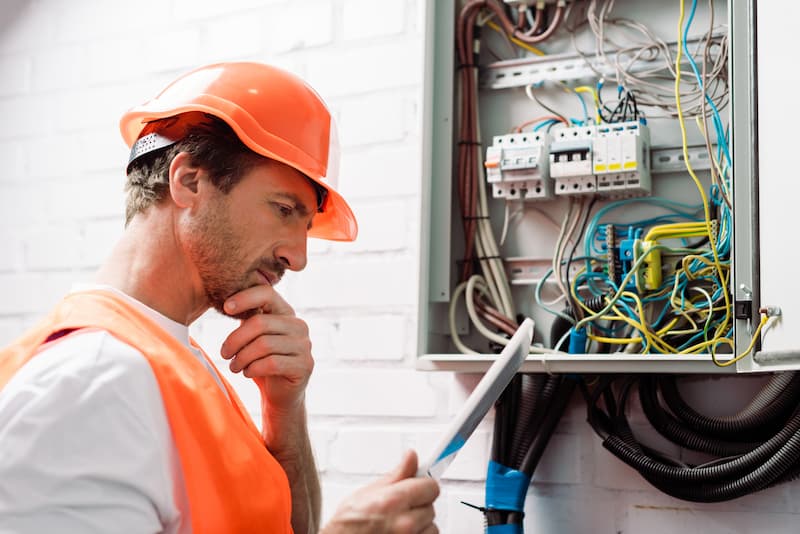Optimize processes with innovative mechanical system optimisation support.
Optimize processes with innovative mechanical system optimisation support.
Blog Article
Top Tips for Effective Electrical System Troubleshooting
Fixing electric systems calls for a methodical method, based in a comprehensive understanding of electric principles and safety and security methods. By acquainting oneself with circuit elements, making use of vital tools, and sticking to a structured evaluation technique, specialists can successfully recognize and fix issues. However, the subtleties of effective fixing expand past simple technical expertise; comprehending exactly how to document findings and focus on safety and security can significantly influence end results. As we explore these essential elements even more, it comes to be clear that understanding this process is not just helpful yet vital for success in the field.
Understand the Fundamentals
Recognizing the essentials of electric systems is important for efficient troubleshooting, as a strong structure allows specialists to detect and settle problems much more efficiently. A comprehensive grasp of electric concepts, such as voltage, present, resistance, and power, is vital in recognizing the source of troubles. Voltage is the electric prospective difference that drives current with a circuit, while resistance opposes the flow of existing, influencing the overall performance of the system.
Experience with circuit parts, consisting of resistors, capacitors, diodes, and changes, is additionally critical. Each part plays a distinctive role in circuit behavior and can influence performance when malfunctioning. Additionally, understanding series and parallel circuit arrangements is vital, as these setups affect the circulation of voltage and present within the system.
Moreover, understanding of safety methods is vital. Technicians have to be aware of prospective risks, such as shock and brief circuits, to carry out safe troubleshooting techniques. By understanding these fundamental principles, specialists enhance their ability to carry out reliable diagnostics and fixings, inevitably causing boosted performance and dependability of electric systems. This fundamental knowledge is the foundation of effective troubleshooting ventures.
Gather Necessary Tools
Efficient troubleshooting of electrical systems calls for the ideal set of tools to detect and settle concerns properly. Crucial tools include a multimeter, which gauges voltage, present, and resistance, permitting for exact assessments of electrical parts.
Additionally, shielded hand tools such as screwdrivers, pliers, and wire pole dancers are vital for safely adjusting electrical links. It is likewise suggested to have a circuit tester on hand to validate the existence of voltage in outlets and cables. For more complicated systems, a thermal imaging video camera can aid spot overheating parts, suggesting possible failures.
Comply With an Organized Approach
Having collected the ideal tools, the next action in repairing electric systems is to adhere to an organized method. A systematic method makes certain that technicians can identify faults successfully and properly, minimizing downtime and preventing unneeded repair work.
Begin by examining the system's schematic representations and specifications. This entails monitoring each element systematically, beginning from the power resource and functioning towards the load.
Use testing tools, such as multimeters and oscilloscopes, to collect objective information regarding voltage, current, and resistance at numerous points within the system. This empirical evidence will lead your troubleshooting efforts and help to validate or eliminate possible sources of failing.
Additionally, think about ecological aspects that may affect the system's performance, such as temperature changes or moisture access. An extensive inspection of circuitry, connections, and parts will make certain that all possibilities are made up.
Paper Your Findings
Thorough paperwork is essential in the fixing procedure of electrical systems. Exact records improve the performance of determining recurring problems and facilitate communication amongst staff member. Each searching for ought to be meticulously noted, consisting of symptoms observed, examinations conducted, and the end results of those tests. electrical system troubleshooting. This technique not only help in understanding the origin of the issue but likewise works as a recommendation for future repairing efforts.

Additionally, maintaining a log of parts replaced or repair work executed is important. This information sustains stock monitoring and can help analyze the long life and reliability of particular parts.
Inevitably, the documents process should be complete yet concise, making it possible for very easy access and testimonial - electrical system troubleshooting. By prioritizing detailed documents, service technicians can create a valuable expertise base that not only help in present troubleshooting but additionally equips future upkeep efforts, therefore enhancing overall system integrity

Prioritize Precaution
Identifying the fundamental threats associated with electric systems is crucial for making sure safety during troubleshooting. Electric shock, burns, and equipment damage are More about the author simply a few of the potential dangers that professionals face. Focusing on precaution is read not just a lawful obligation however additionally an ethical crucial that safeguards both the technician and the surrounding environment.
Prior to starting any kind of troubleshooting task, specialists need to don suitable personal safety equipment (PPE), including protected handwear covers, safety and security glasses, and flame-resistant clothes. Making sure that the workspace is dry and devoid of clutter can dramatically reduce the risk of crashes. It is crucial to de-energize circuits prior to starting any type of work, confirming that they are not live with the use of a multimeter or voltage tester.
Establishing clear communication protocols with staff member is also vital; this ensures that everyone recognizes potential hazards and the status of the electric system being functioned on. Finally, having an emergency situation feedback strategy in position can confirm invaluable in case of a case. By prioritizing safety wikipedia reference actions, professionals can efficiently minimize threats and cultivate a safer work environment.
Verdict
Efficient electrical system troubleshooting relies upon a detailed understanding of basic principles and a methodical method. By collecting vital devices, adhering to systematic analysis methods, and meticulously recording findings, the repairing process comes to be much more efficient and trusted. Prioritizing precaution ensures the wellness of individuals included and the honesty of the electrical system. Applying these techniques will certainly enhance the fixing experience, leading to quicker resolutions and enhanced functional efficiency in electric systems.
Report this page